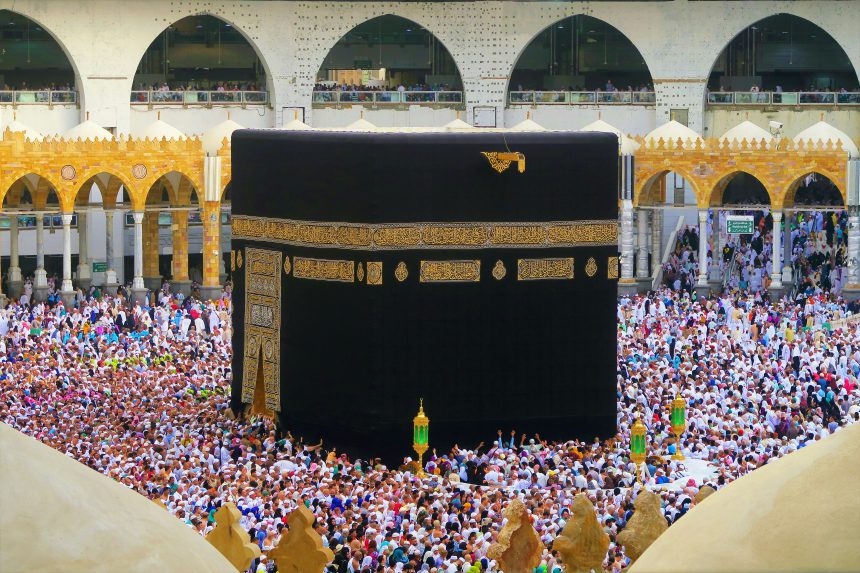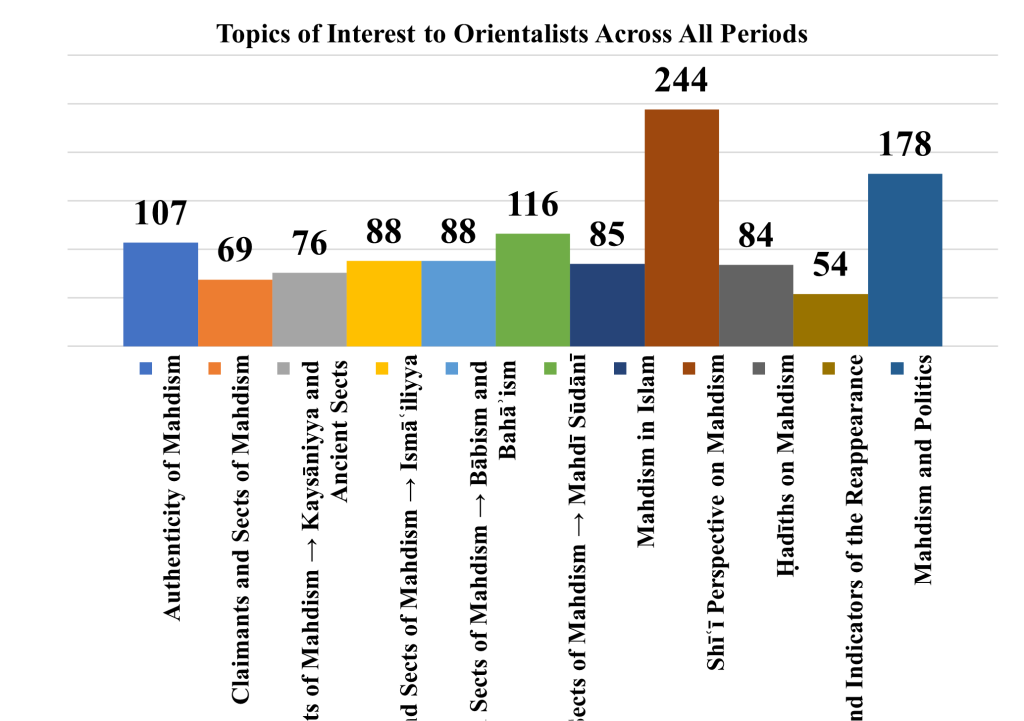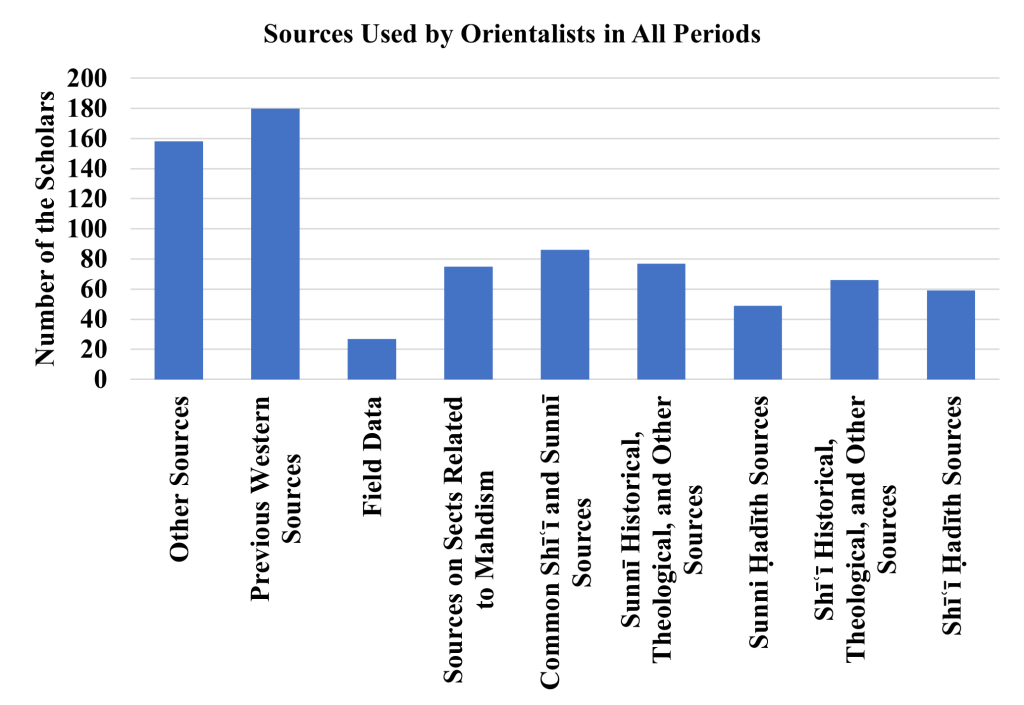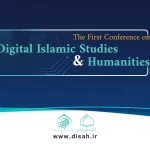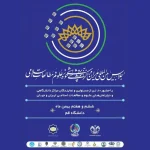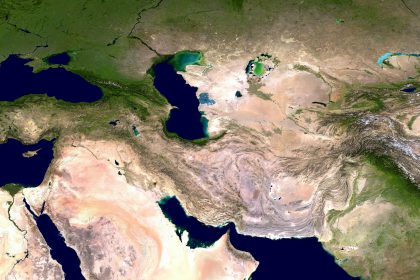- Introduction
- First Period (1885–1945)
- Second Period (1946–1978)
- Third Period (1979–2000)
- Fourth Period (2001–Present)
- Orientalist Perspectives on Mahdism
- The Evolution of Orientalist Perspectives on Mahdism in the Past 150 Years
- Statistical Findings of the Book
Introduction
Western scholars have long shown interest in Islamic topics for various reasons and purposes, engaging in research and offering perspectives on the beliefs and traditions practiced among Muslims. These studies and writings, whose origins can be traced back to the period following the Muslim conquest of al-Andalus and even earlier, came to be known as Orientalism.
Among the wide range of Islamic subjects examined by Orientalists, the study of Mahdism—or the Islamic messianic outlook—does not have a very long history. This may be attributed to the initial lack of attention on the part of Western scholars, who were unfamiliar with the significance of this belief and who had not yet observed its tangible effects in Muslim societies. Such neglect, however, diminished by the mid-nineteenth century. By the latter part of that century, numerous Western researchers and authors wrote extensively and expressed opinions on Mahdism.
An investigation into the political, social, and religious contexts of this period reveals the underlying reasons for this growing interest. Chief among these were the political and colonial conditions prevailing in Muslim-majority countries, as well as the emergence of several prominent claimants to Mahdism in different Islamic lands. Notable examples include the appearance of Sayyid ʿAlī-Muḥammad Shīrāzī (known as the Bāb) in Iran, Muḥammad Aḥmad Sūdānī (known as Mahdī Sūdānī) in North Africa, and Mīrzā Ghulām Aḥmad Qādiyānī in the Indian subcontinent and present-day Pakistan.
The conclusion of the First and Second World Wars in the mid-twentieth century, together with the consolidation of stability in Western academic institutions, marked a new phase in Orientalism and in the study of Islam in the West. As a result, the focus and methods of Orientalist research on Mahdism underwent significant transformation. These shifts were so profound that the second half of the twentieth century may be regarded as the beginning of a distinct stage in Western scholarship on Mahdism.
Beyond its far-reaching political and social impact globally, the Islamic Revolution in Iran undoubtedly elevated the standing of Shiʿism and Iran in Western academic circles. It reshaped the development of Western Shīʿī studies and research on the Mahdī. Thus, 1979 marks the starting point of a new era in Orientalist scholarship on Mahdism.
The rise of Islamophobia in the West following the events of 2000 and 2001, along with subsequent major developments and their profound impact on Western writings about Mahdism, inaugurated a new phase in the evolution of Orientalist perspectives. This phase extends into the present.
This article examines the evolution of Western Orientalist views on Mahdism over the past 150 years, which we divide into four distinct periods. In this study, the term “Orientalists” in the context of Mahdism refers to Western-origin scholars who, within various academic and research institutions, have investigated Islamic messianism (Mahdism) and related subjects. Their research has encompassed the historical background of the belief, self-proclaimed Mahdī figures (for instance, Mahdī Sudanī), sects associated with Mahdism (such as the Kaysāniyya and the Bahāʾī Faith), key concepts connected to Mahdism (including intiẓār[1], ghayba[2], and rajʿa[3]), as well as signs of the reappearance (for example, the Sufyānī and the Dajjāl).
First Period (1885–1945)
The first independent Western work focused specifically on Mahdism appears to be Le Mahdi depuis les origines de l’Islam jusqu’à nos jours (The Mahdī, Past and Present) by the French scholar James Darmesteter (1849-1894), published in 1885 in the aftermath of the Sudanese Mahdī uprising. That same year, the book was translated into English and published in New York. Although Mahdism had previously received only passing references in Western writings on Islam, Darmesteter’s work can be regarded as marking the beginning of systematic Orientalist scholarship on the subject.
Following him, scholars such as Christiaan Snouck Hurgronje (1857-1936), David Samuel Margoliouth (1858-1940), Gerlof van Vloten (1866-1903), Edgard Blochet (1870-1937), Ignaz Goldziher (1850-1921), Duncan Black Macdonald (1863-1943), and Dwight M. Donaldson (1884-1976) offered extensive commentary on the subject. For this reason, the first period is regarded as spanning from 1885 until the end of the Second World War.
According to current scholarship, during this period, 41 Orientalists produced over 75 works—including books, articles, and encyclopedia entries—containing substantial discussions of Mahdism. Their research primarily focused on the various claimants to the Mahdī, sects associated with Mahdism, the concept of the Mahdī in Islam more broadly, and, more specifically, the Shīʿī perspective on Mahdism and the authenticity of this belief.
Second Period (1946–1978)
In the aftermath of the Second World War and the decline of classical colonialism, the assertive, superiority-laden tone that had long marked Orientalist scholarship began to diminish. At the same time, as the turmoil of the war subsided, Western academic institutions gained greater access to authentic Islamic sources. European universities resumed their activities, while American and Israeli universities entered the field of Islamic studies, fostering a new generation of researchers. These developments constituted a turning point in the field: the academic and methodological approaches of Orientalists became more refined, their analyses more nuanced, and their discussions more precise and in-depth.
Thus, the period from 1946 to 1978—ending with the victory of the Islamic Revolution in Iran and concurrent global events that ushered in a new era in Western scholarship on Islam—may be identified as a distinct phase in the study of Islamic Mahdism by Western scholars. Prominent figures of this period who made significant contributions to discussions on Mahdism include Louis Massignon (1883-1962), Hamilton Alexander Rosskeen Gibb (1895-1971), Henry Corbin (1903-1978), William Montgomery Watt (1909-2006), Marshall Hodgson (1922-1962), and Joseph Eliash (1932-1981).
During this period, more than 36 books and 25 articles devoted substantial attention to Mahdism, produced by at least 47 authors. The dominant focus of Orientalists in this era was Shīʿī Mahdism, although they also explored the authenticity of the Mahdī doctrine, sects linked to Mahdism, and notable claimants to the Mahdī.
Third Period (1979–2000)
The Islamic Revolution in Iran in early 1979 profoundly influenced Western political, religious, and academic perspectives on Islam, especially Shiʿism. This transformation is reflected in the establishment and growth of Islamic studies centres across many Western countries, as well as in the publication of a substantial body of research on Islam and Shiʿism.
It is widely recognized that belief in the Imām al-Mahdī (a) and preparation for his reappearance were among the most important slogans of Imam Khomeini and the revolutionaries during the Islamic movement. Concurrently, Western scholars increasingly pursued more detailed and nuanced studies of Islamic doctrines. Particular attention was given to Mahdist beliefs, especially among Shīʿīs, and to the political dimensions of Mahdism. Other events occurring in the same year, such as the rebellion of Juhaymān al-ʿUtaybī in Saudi Arabia and the occupation of the Grand Mosque of Mecca—accompanied by Mahdist slogans—also attracted significant interest among Orientalists.
This new stage of Mahdism studies in the West, initiated by the Iranian Revolution, introduced novel dimensions and perspectives that clearly distinguished it from earlier periods. It extended until the early twenty-first century, when the post-2000 developments marked the beginning of another distinct phase. The defining characteristics of the third period include a diversification of approaches to Mahdism, deeper engagement with Shīʿī Mahdist thought, and an emphasis on the transformation of Mahdist beliefs within Shīʿī communities, particularly regarding their political implications as seen in the Islamic Revolution of Iran.
Numerous scholars contributed to discussions of Mahdism during this period. Among the most notable were Wilferd Madelung (1930-2023), Etan Kohlberg (b. 1943), Nikki Reichard Keddie (b. 1930), Heinz Halm (b. 1942), Yann Richard (b. 1948), Verena Klemm (b. 1956), and Colin P. Turner (b. 1967). Surveys of this period (1979–2000) have recorded more than 200 works—books, dissertations, articles, and encyclopedia entries—produced by approximately 87 authors. The Shīʿa perspective on Mahdism, as well as the relationship between Mahdism and politics, occupied a rather prominent place in the focus of Orientalists of this period.
Fourth Period (2001–Present)
After the year 2000, a number of major global developments left a deep imprint on Western scholarship on Islam and, consequently, on Orientalist studies of Mahdism. These included the intensification of millenarian sentiment among Christians as two millennia passed since the birth of Christ, the rise of Salafī-jihādī movements across parts of the Muslim world that often employed messianic slogans, the suspicious events of September 11, 2001 and the subsequent surge of Islamophobia in Western political and media spheres, as well as the increasing prominence of messianic expectations among Shīʿī Muslims. Though these were primarily political and social phenomena, their impact on Western academic and intellectual discourse was profound and clearly observable.
The breadth and depth of Western research on Islamic messianism during this period is evident in the considerable quantitative and qualitative expansion of scholarly works on Mahdism. These developments necessitate viewing the past two decades as a distinct stage. While the beginning of this new era may be placed in the early twenty-first century, the year 2001 is taken in this study as its formal starting point, owing to the significance of the September 11 attacks.
The defining features of the fourth period can be summarized as follows: the continued diversification of approaches to Islamic messianism; the exploration of new themes within this field; special attention to manifestations of Mahdism and millenarianism in the contemporary Islamic world, both among Shīʿīs and Sunnīs; the expansion of in-depth, specialized research in Western academic institutions; and the emergence of a group of “media Orientalists” who openly sought to oppose Mahdism through mass communication platforms.
A large number of scholars have been active in this period. Among the most prominent are Mercedes García-Arenal Rodríguez (b. 1950), Andrew J. Newman, Ofer Livne-Kafri, Timothy R. furnish (b. 1960), Jean-Pierre Filiu (b. 1961), Rainer Brunner (b. 1964), David Cook (b. 1966), Robert Gleave (b. 1967), Sean Anthony, Roy Vilozny, and Edmund Hayes. Surveys of this period (2001–present) indicate the production of over 120 books or dissertations and a comparable number of articles on Mahdism by some 117 different authors. As in the previous period, the Shīʿī perspective on Mahdism and the relationship between Mahdism and politics have remained the primary areas of Orientalist focus.
Orientalist Perspectives on Mahdism
Four of the most significant subtopics of Mahdism, along with the corresponding views of Orientalists, can be summarized as follows:
The Authenticity and Origins of Mahdism
While the Muslims trace the roots of Mahdism to the Qurʾān and the narrations of the Prophet Muḥammad (s), many Orientalists have sought alternative explanations for the origin of this belief. For example, a number of them argue that since the notion of a messianic savior at the end of time is also present in earlier religions such as Zoroastrianism, Judaism, and Christianity, Muslims adopted the idea and reinterpreted it within their own tradition. Other Orientalists consider certain early Islamic events—such as the internal conflicts between the Umayyads and the ʿAbbāsids—to have been the starting point for the emergence and consolidation of Mahdist belief. Some Western scholars also attribute the development and spread of this doctrine to periods of injustice and corruption in Islamic history, suggesting that such conditions fueled hope in a redemptive figure.
Claimants to Mahdism
Throughout Islamic history, individuals have occasionally claimed to be the promised Mahdī, the savior awaited by Muslims. Such figures often attracted followers, and in some cases even launched uprisings, founded states, or established new religious sects. Orientalists have devoted significant attention to these claimants, who are found in both Sunnī and Shīʿī contexts. Western studies on figures such as Ibn Tūmart, Mahdī Sūdānī, Sayyid ʿAlī-Muḥammad Bāb (and the Bābī and Bahāʾī movements), and Mīrzā Ghulām Aḥmad Qādiyānī (and the Aḥmadiyya sect) are examples of this interest.
Shīʿī Mahdism
Although belief in the coming of the Mahdī at the end of time is shared by all Muslims, it holds a foundational and central place in Shiʿism, particularly among the Twelver Shīʿa. They believe that the Mahdī is the Twelfth Imām (a), the son of Imām Ḥasan al-ʿAskarī (a), who was born in 255 AH (869 CE) and remains alive, though in occultation. Given the significance of this doctrine within Shīʿī theology, and distinctive concepts such as occultation (ghayba), return (rajʿa), and awaiting (intiẓār), as well as its profound political and social effects throughout Shīʿī history, many Orientalists have engaged directly with these subjects in their research.
The Relationship between Mahdism and Politics
The political and social dimensions of Mahdism have long attracted the attention of Orientalists, but in recent decades this focus has become particularly prominent. A recurring question in Western scholarship is how a religious belief such as Mahdism can attain political significance and serve as a catalyst for profound social and political transformations in Muslim societies. While historical examples—such as the Fāṭimid dynasty or the Ṣafavid state—illustrate the political potential of Mahdism, this theme became particularly salient after the Islamic Revolution in Iran, in which Mahdist slogans played a central role. Similarly, in more recent years, certain Salafī and jihādī movements—such as the Taliban and ISIS—have drawn upon this belief for their propaganda. These developments have heightened the visibility of the political dimension of Mahdism in Orientalist research and publications.
The Evolution of Orientalist Perspectives on Mahdism in the Past 150 Years
The book Siyr-i Taḥavvul-i Nigāh-i Mustashriqān bih Mahdaviyyat dar 150 Sāl-i Akhīr (The Evolution of Orientalist Perspectives on Mahdism in the Past 150 Years), authored by the present writer in Persian, is composed of six chapters. The first chapter outlines the general framework and basic concepts of the study, including the research questions, objectives, methodology, and scope, as well as definitions of the key terms employed throughout the book.
Chapters Two through Five are dedicated to the four historical periods of Orientalist scholarship on Mahdism. Each chapter begins by describing the contextual factors and distinctive features that led certain Western scholars in that period to pay special attention to topics related to Mahdism. This is followed by a structured and detailed presentation of their views on specific subtopics. The most important issues discussed from an Orientalist perspective include the following: the place of Mahdism within Islam; the figure of the Islamic savior; the authenticity and origins of Mahdism; references to Mahdism in the Qurʾān and narrations; Imām Mahdī (a) and related doctrines among the Shīʿa, such as occultation, return, and awaiting; the social and political manifestations of Mahdism among Muslims; Mahdist movements and claimants throughout Islamic history; the signs of Imām Mahdī’s reappearance; contemporary apocalypticism in the Muslim world; and, finally, the portrayal of the Islamic savior as a constructed enemy in Western media.
After presenting Orientalist opinions in detail, each chapter concludes with a brief analytical section that evaluates these views by examining the attention given to different subtopics, the sources employed, the nationality and professional background of the scholars, and other relevant statistical data. Each chapter also ends with a set of practical tables summarizing the works of Orientalists on Mahdism, the extent of their focus on specific subtopics, and the sources they utilized.
The final chapter of the book provides an overall synthesis, statistical analysis, conclusions, and recommendations. It presents noteworthy data and charts based on the cumulative study of Orientalist views across the four historical periods, including classifications by nationality, religion, denomination, and gender of the scholars, as well as their preferred subjects and sources. In one section, the book offers concise tables comparing the most important Orientalist positions on three central themes—authenticity of Mahdism, Shīʿī Mahdism, and the relationship between Mahdism and politics—along with the key proponents of these views. The chapter concludes with a set of proposed directions for future research in this field.
The book has attracted scholarly attention both as a doctoral dissertation and in published form. It was recognized as a distinguished work at the Twenty-Second Book of the Year Conference of the Seminary (2021/1399 SH). Among its notable features are:
- A multi-year research effort involving extensive extraction and categorization of Orientalist opinions;
- The use of over 1,100 Western sources authored by more than 220 Orientalists;
- A strong emphasis on primary sources, including over 600 Western works (in addition to more than 80 Arabic and Persian references);
- The provision of numerous charts and tables that aggregate and compare key findings;
- The identification of dozens of potential research topics related to Orientalist views on Mahdism, offered for the benefit of academic and research centers.
The Evolution of Orientalist Perspectives on Mahdism in the Past 150 Years was published in 2022 (1401 SH) by the Research Institute for Islamic Culture and Thought in a volume of 696 pages. The author had previously published another book, Barrasī va Naqd-i Ārā-yi Mustashriqān-i Muʿāṣir dar Zamīnih-yi Mahdaviyyat (An Examination and Critique of Contemporary Orientalist Views on Mahdism), in 2019 (1398 SH), which was also recognized as a prize-winning work at the Thirteenth Farabi International Award in 2022 (1401 SH).
Statistical Findings of the Book
This section presents a statistical report based on the data collected in the book, derived from an examination of the views of more than 200 Orientalists and over 600 of their works:
Nationality of Orientalists Engaged in Mahdism Studies
The largest number of Western scholars who have expressed views on Mahdism are from the United States. Major European countries such as the United Kingdom, Germany, and France occupy the subsequent ranks in this field. A noteworthy point is that Israel has become increasingly active in Islamic studies, including research on Mahdism, during the last two periods. Consequently, Israeli Orientalists now occupy the third position in the overall ranking. The main reason for this development lies in the establishment of specialized centers for Islamic studies in prominent American, European, and Israeli universities, which have produced a significant number of scholars engaged in Islamic topics and publications.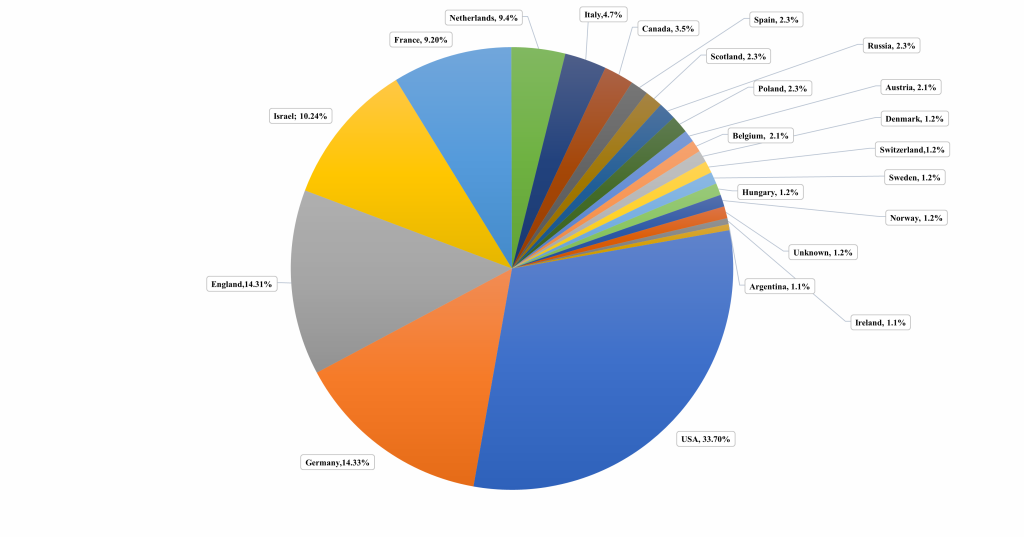
Topics of Interest among Orientalists in the Study of Mahdism
The subject of Mahdism covers a wide range of issues, and Western scholars have typically addressed the topic from one specific angle or perspective. A statistical examination of the studies reveals that certain themes have received greater attention than others. The most prominent among these are: the authenticity and origins of Mahdism, self-proclaimed Mahdīs, Shīʿī Mahdism, and the relationship between Mahdism and politics.
Sources Used by Western Scholars
According to the final statistical findings, most Orientalists have relied primarily on Western or secondary sources in their writings. However, some of them have also drawn on Islamic sources—both Shīʿī and Sunnī—as well as fieldwork and direct engagement with Muslim communities.
Gender and Religion of Orientalists
Statistics indicate that, over time, the number of female Orientalists and their proportion relative to men has increased. Precise and definitive data on the religious affiliations of Western scholars of Mahdism are not available for various reasons, although it can be assumed that the majority are Christian. Nevertheless, the presence of two specific religious affiliations—despite the relatively small number of their adherents worldwide—has been particularly noticeable among Western scholars active in this field. One is Judaism, represented by prominent figures such as Goldziher, Friedlaender, Bernard Lewis, and Etan Kohlberg. The other is the Bahāʾī faith, which has also included notable researchers of Mahdism from the past to the present.

[1] Intiẓār refers to the active awaiting of Imām Mahdī’s reappearance, encompassing hope, preparedness, and spiritual commitment.
[2] The occultation of Imām Mahdī (a), during which he is hidden from public view but continues to guide spiritually until his reappearance.
[3] The belief in the return of certain individuals, righteous or unjust, to life before the Day of Judgment as part of divine justice.

